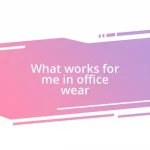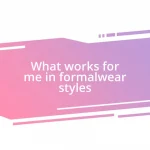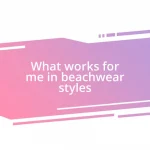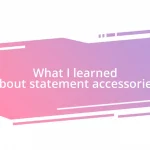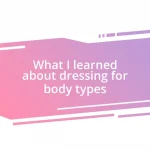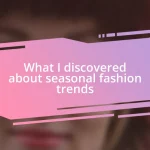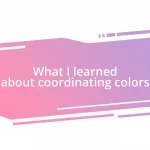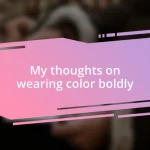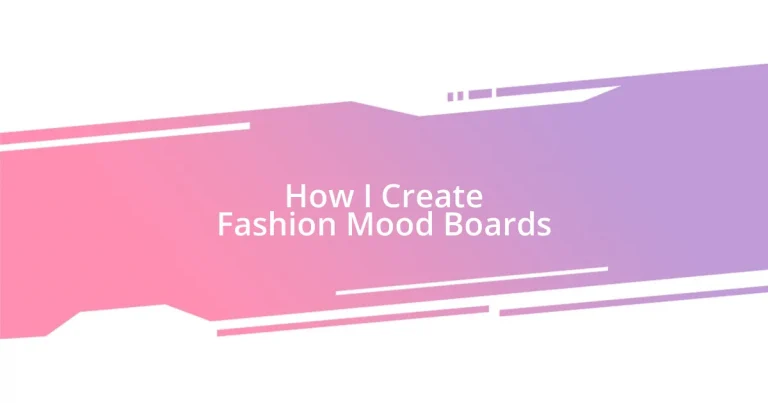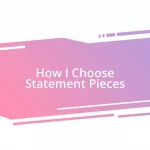Key takeaways:
- Fashion mood boards function as vital visual storytelling tools, helping designers clarify ideas and maintain focus throughout their creative process.
- Using digital platforms like Canva and Pinterest enhances the creation of mood boards by allowing easy manipulation of images and layouts, fostering creativity.
- Gathering inspiration from various sources, including nature, art, and collaborative discussions, enriches the mood board experience and helps in developing unique design concepts.
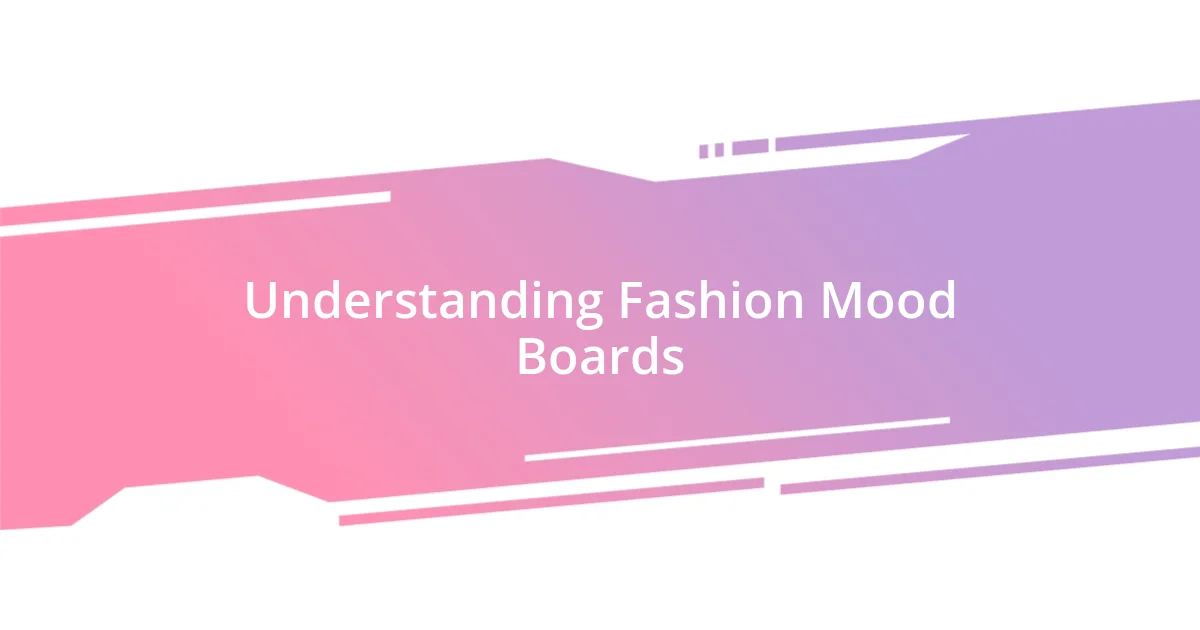
Understanding Fashion Mood Boards
Fashion mood boards serve as a visual storytelling tool, allowing designers to capture their creative vision. I remember the thrill of piecing together my first mood board; it was like giving life to a concept that had danced in my mind for weeks. Bringing together textures, colors, and images made everything feel real, sparking an emotional connection to my design process.
At their core, mood boards help clarify ideas and maintain focus throughout a project. Have you ever felt overwhelmed by the multitude of choices available in fashion? I often find myself sifting through countless inspirations, and a mood board acts like my North Star, guiding me back to my original intentions.
Each element on a mood board—from swatches of fabric to images of models—tells its own story. I often include photographs that resonated with me emotionally, perhaps because they evoke a particular memory or mood. This personal touch not only enhances my creative journey but also makes the final pieces more meaningful. Did you know that the right combination of elements can make your vision truly stand out?
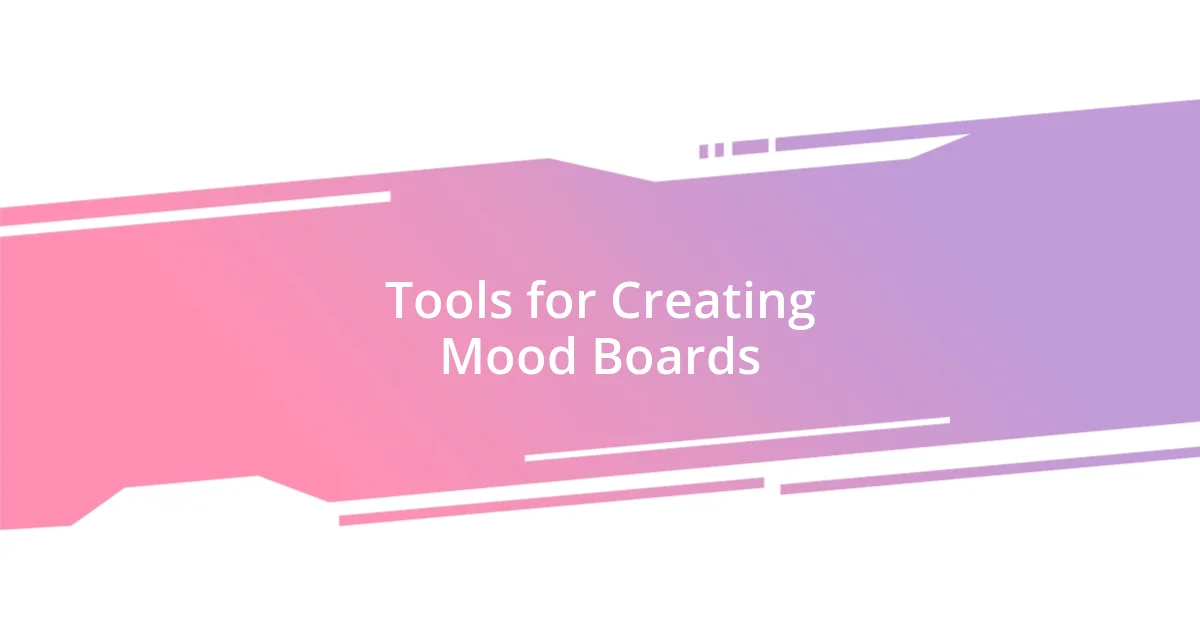
Tools for Creating Mood Boards
When it comes to constructing mood boards, I’ve found that the right tools make all the difference. Often, I reach for digital platforms like Canva or Pinterest, as they allow for easy manipulation of images and layouts. I remember my first time using Canva—it felt like walking into a well-stocked art supply store. Suddenly, the overwhelming possibilities became my playground, making it simple to drag and drop elements until everything felt just right.
Here are some tools that can elevate your mood board creation:
- Canva: An intuitive design tool with templates to kickstart your creativity.
- Pinterest: A treasure trove of inspiration, perfect for pinning images from across the web.
- Adobe Spark: Offers robust design features while being user-friendly.
- Moodboard: A platform specifically designed for mood boards, providing a clean interface to curate and visualize ideas.
- Microsoft PowerPoint or Keynote: Surprisingly effective for creating simple, yet impactful mood boards with easy slide management.
Whether I’m showcasing a color palette or a theme, having these tools at my fingertips transforms my ideas into a cohesive visual narrative. It’s comforting to know that with just a bit of creativity and the right resources, I can convey the essence of my designs effortlessly.
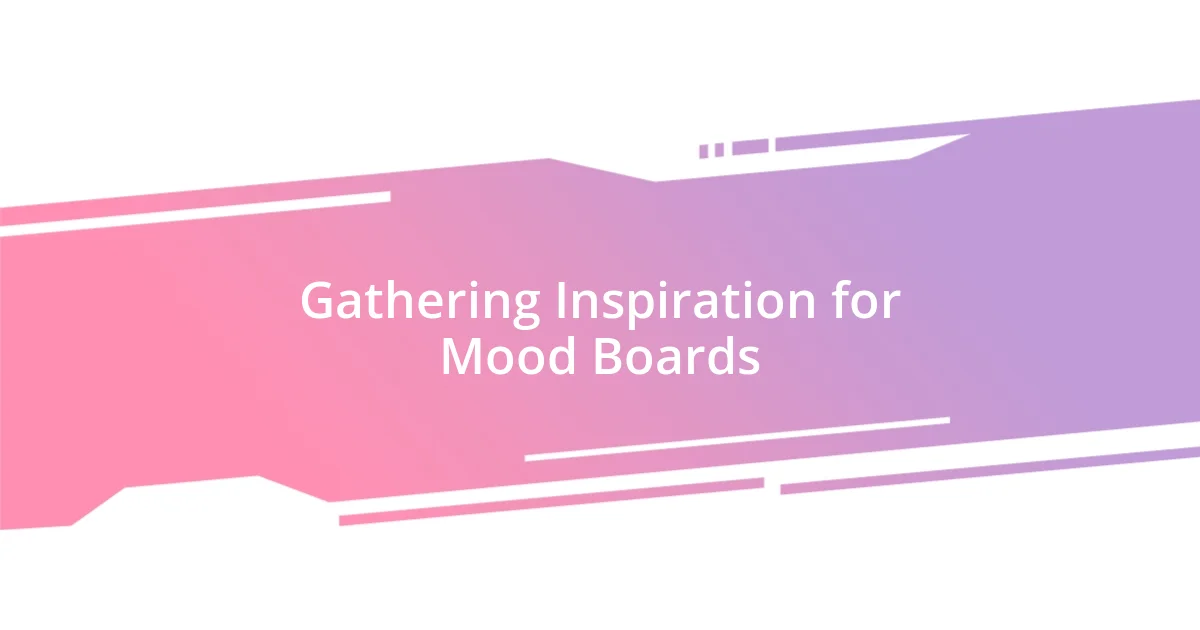
Gathering Inspiration for Mood Boards
Gathering inspiration for my mood boards is one of the most exciting parts of the creative process. I often start by exploring my surroundings—be it a walk in nature or a visit to a local art gallery. I remember one afternoon spent at a vibrant street market, where the mixed colors of spices and textiles struck me, leading to an entire board dedicated to earthy tones and patterns. Sensory experiences like these infuse my mood boards with authenticity and reflect my personal journey.
I find that various sources ignite my creativity, such as magazines, fabric swatches, and even online platforms. Scrolling through Instagram during my coffee breaks often reveals unexpected ideas that I hadn’t considered before. For instance, I once came across an inspiring feed showcasing avant-garde accessories that turned my perception of style on its head. It’s fascinating how a single image or idea can ripple through my design process, shaping the entire mood of my collection.
Connecting with fellow creatives also plays a significant role in gathering inspiration. I cherish discussions and brainstorming sessions with other designers. Sharing our personal influences gives me fresh perspectives that can completely alter my approach. One memorable meeting with a friend who specializes in vintage fashion opened my eyes to how historical trends can be reimagined for today’s world. That’s when I realized that inspiration often hides in collaboration—it’s a treasure chest waiting to be opened.
| Source of Inspiration | Example |
|---|---|
| Nature | Color palettes inspired by flowers or landscapes |
| Art Gallery Visits | Textures and themes reflected in contemporary artwork |
| Online Platforms | Images found on Instagram or Pinterest |
| Collaborative Discussions | Fresh ideas from conversations with other designers |
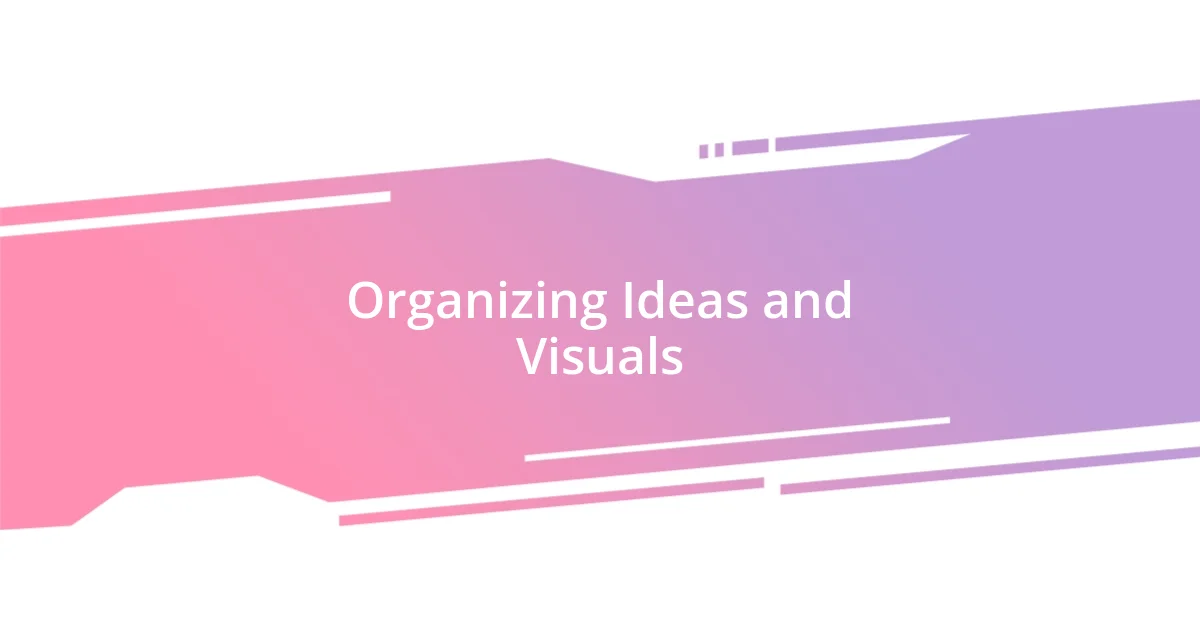
Organizing Ideas and Visuals
When organizing my ideas and visuals for a mood board, I love to categorize elements based on themes, colors, or textures. For instance, I’ve often found that grouping images that share a similar aesthetic helps me visualize the overall vibe I’m aiming for. It reminds me of sorting through a box of memories; each piece has its own story, and together they create a bigger picture.
I also enjoy creating sections within my board where I can highlight specific elements, like color palettes or key textures. I remember a time when I was preparing for a spring collection and decided to dedicate one area to floral patterns. It felt like organizing a mini-garden on my board, where each flower represented not just a design choice but a feeling—flimsy, joyful, and vibrant. Isn’t it incredible how visuals can evoke emotions so strongly?
Using layers can be particularly beneficial, too. I often overlay images to find the perfect balance of composition, much like how a chef layers flavors in a dish. I once overlaid two contrasting patterns—a bold stripe and a delicate floral—and instantly felt how the lively energy clashed beautifully, prompting me to think outside of the box. What combinations inspire you to take creative risks? Each time I experiment, I remind myself that discovering that unexpected harmony can lead to something magical.
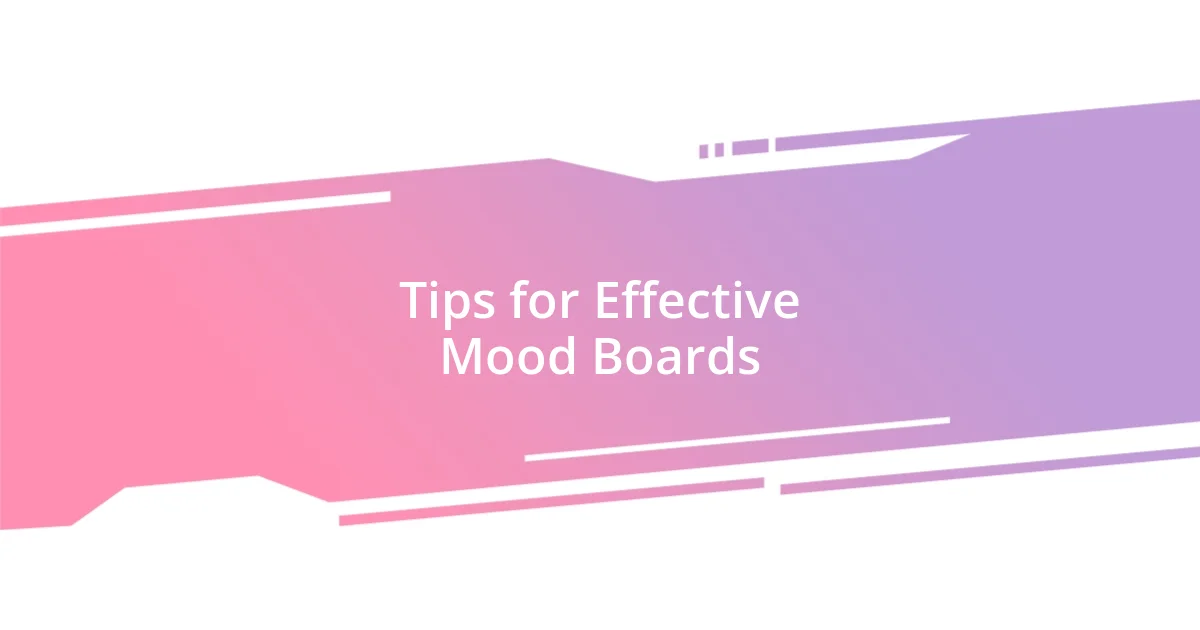
Tips for Effective Mood Boards
When creating effective mood boards, I believe it’s crucial to maintain a clear focus on your theme. For me, this means selecting a specific story or emotion I want to convey. I once crafted a board centered around the idea of “wanderlust,” using images of far-off landscapes and travel-inspired textiles. The moment I pinned down that central idea, everything else fell into place—it was as if the board began to speak for itself.
Another tip is to embrace a variety of textures and mediums. I find that incorporating physical elements, like fabric swatches or natural materials, adds a tactile quality that digital images alone can’t offer. During one of my mood board sessions, I included a piece of driftwood that reminded me of a beach trip. Touching that wood transported me back to those summer days, sparking inspiration for a collection that married rustic simplicity with elegance. Have you ever felt that connection between material and memory? It’s truly powerful.
Finally, don’t shy away from making bold choices. I once included an unexpected neon piece next to a more muted, classic palette. It felt risky at first, but that contrast breathed new life into the entire concept. Trust your instincts! Sometimes, the most surprising combinations can lead to the most captivating designs. What surprises have you found while creating your boards? Embrace them; they often lead to the most rewarding discoveries.
